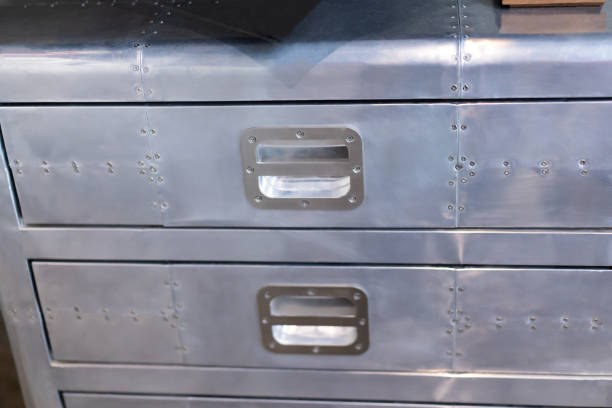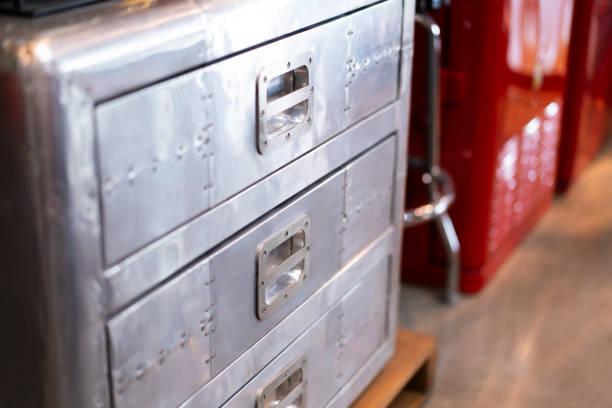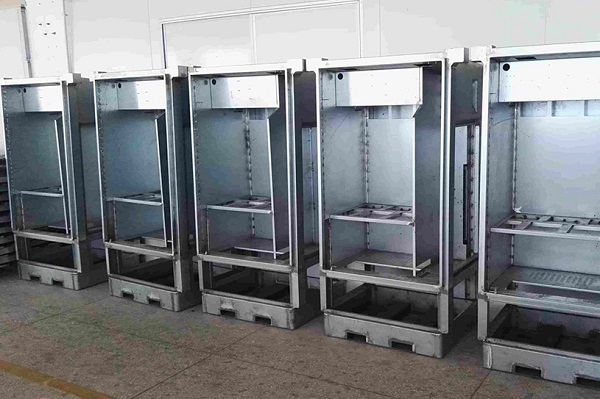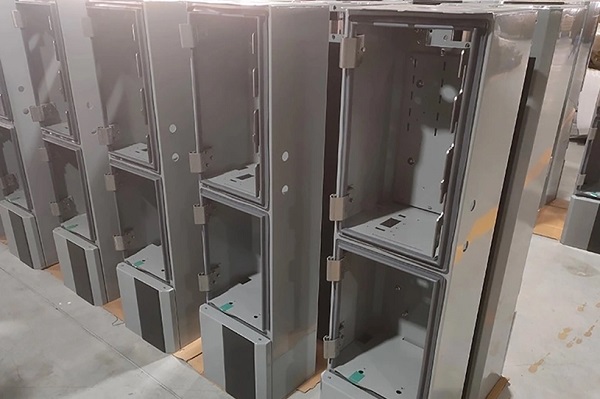In the installation and protection of modern industrial equipment, sheet metal cabinets play a crucial role. They are used not only for storing and protecting various electronic control devices, communication equipment, and more, but also for ensuring the safe and stable operation of the equipment. This article will provide a detailed introduction to the basic components, structure, and main connection methods of sheet metal cabinets, helping to understand their craftsmanship features and structural advantages.
A sheet metal cabinet is mainly composed of the base, front and rear doors, side doors, front and rear frames, top cover, corner brackets, and cross beams, typically using a detachable assembly structure. This structural method is not only convenient for transportation and installation but also facilitates on-site equipment connections and later maintenance.
The various sheet metal parts used in the cabinet are made through cold processing of metal thin plates, ensuring uniform sheet thickness and good structural consistency. The overall structure is stable and sturdy, with the base adopting a high-load capacity tray design, which enhances the stability of the cabinet and improves the operational stability of the equipment.

To improve corrosion resistance and service life, the surface of the sheet metal cabinet is usually treated with sandblasting and powder coating to form a protective layer against corrosion, acids, and alkalis. In terms of structural details, for instance, the corner brackets are typically treated with galvanized plating to enhance grounding; the front and rear doors use high-density mesh design to reduce electromagnetic interference; and the fan housing is formed in one piece to minimize vibration impacts on the equipment.
Sheet metal cabinets can be classified based on their connection methods into four primary types: bonded, screw, pin, and welded connections. These methods determine how various components of the cabinet are joined together during manufacturing. Each method has its own advantages and applications, depending on the cabinet's requirements for strength, durability, and ease of assembly.

Bonded Connection: Often used when a smooth, seamless finish is required, providing a clean and aesthetically pleasing result.
Screw Connection: Commonly used for parts that need to be disassembled and reassembled, such as removable panels or doors.
Pin Connection: Typically used for smaller, lighter parts where easy attachment and detachment are needed.
Welded Connection: Provides the highest strength and durability, ideal for heavy-duty cabinets that need to support significant weight or pressure.
In the manufacturing process, sheet metal cabinets typically undergo welding, sheet cutting, and bending processes, which form the core steps of sheet metal processing.


As manufacturing technology advances, the connection methods of sheet metal cabinets have become more diverse. Today, cabinets can either be formed by processing whole panels or assembled through modular plug-ins. The modular design allows for greater flexibility in adapting to various industrial requirements and facilitates maintenance and repairs.
Structurally, the front crossbeam, side crossbeam, middle crossbeam, and columns make up the basic framework of the cabinet. The front and side crossbeams are typically assembled using bending processes combined with anti-positioning plug-in techniques and columns, or they may be connected via welding. The middle crossbeam is generally fixed using pre-set process grooves on the columns. This modular approach enhances the overall stability of the cabinet while allowing for quick reassembly or upgrades.